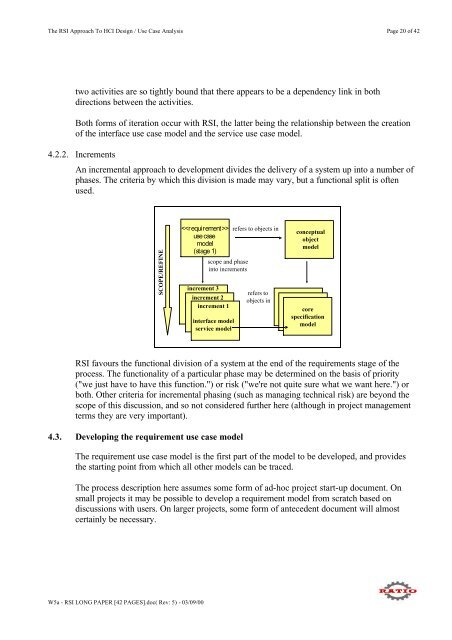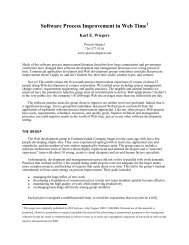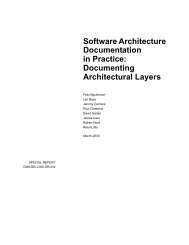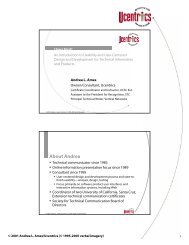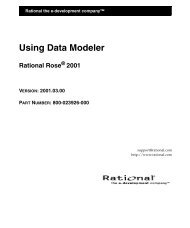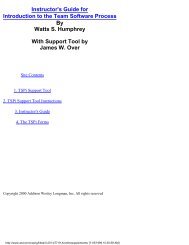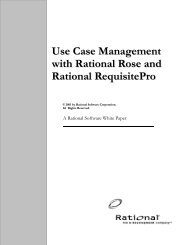RSI - A Structured Approach Use Cases and HCI Design
RSI - A Structured Approach Use Cases and HCI Design
RSI - A Structured Approach Use Cases and HCI Design
You also want an ePaper? Increase the reach of your titles
YUMPU automatically turns print PDFs into web optimized ePapers that Google loves.
The <strong>RSI</strong> <strong>Approach</strong> To <strong>HCI</strong> <strong>Design</strong> / <strong>Use</strong> Case Analysis Page 20 of 42<br />
two activities are so tightly bound that there appears to be a dependency link in both<br />
directions between the activities.<br />
Both forms of iteration occur with <strong>RSI</strong>, the latter being the relationship between the creation<br />
of the interface use case model <strong>and</strong> the service use case model.<br />
4.2.2. Increments<br />
An incremental approach to development divides the delivery of a system up into a number of<br />
phases. The criteria by which this division is made may vary, but a functional split is often<br />
used.<br />
SCOPE/REFINE<br />
W5a - <strong>RSI</strong> LONG PAPER [42 PAGES].doc( Rev: 5) - 03/09/00<br />
<br />
use case<br />
model<br />
(stage 1)<br />
increment 3<br />
scope <strong>and</strong> phase<br />
into increments<br />
increment 2<br />
increment 1<br />
interface model<br />
service model<br />
refers to objects in<br />
refers to<br />
objects in<br />
conceptual<br />
object<br />
model<br />
core<br />
specification<br />
model<br />
<strong>RSI</strong> favours the functional division of a system at the end of the requirements stage of the<br />
process. The functionality of a particular phase may be determined on the basis of priority<br />
("we just have to have this function.") or risk ("we're not quite sure what we want here.") or<br />
both. Other criteria for incremental phasing (such as managing technical risk) are beyond the<br />
scope of this discussion, <strong>and</strong> so not considered further here (although in project management<br />
terms they are very important).<br />
4.3. Developing the requirement use case model<br />
The requirement use case model is the first part of the model to be developed, <strong>and</strong> provides<br />
the starting point from which all other models can be traced.<br />
The process description here assumes some form of ad-hoc project start-up document. On<br />
small projects it may be possible to develop a requirement model from scratch based on<br />
discussions with users. On larger projects, some form of antecedent document will almost<br />
certainly be necessary.


